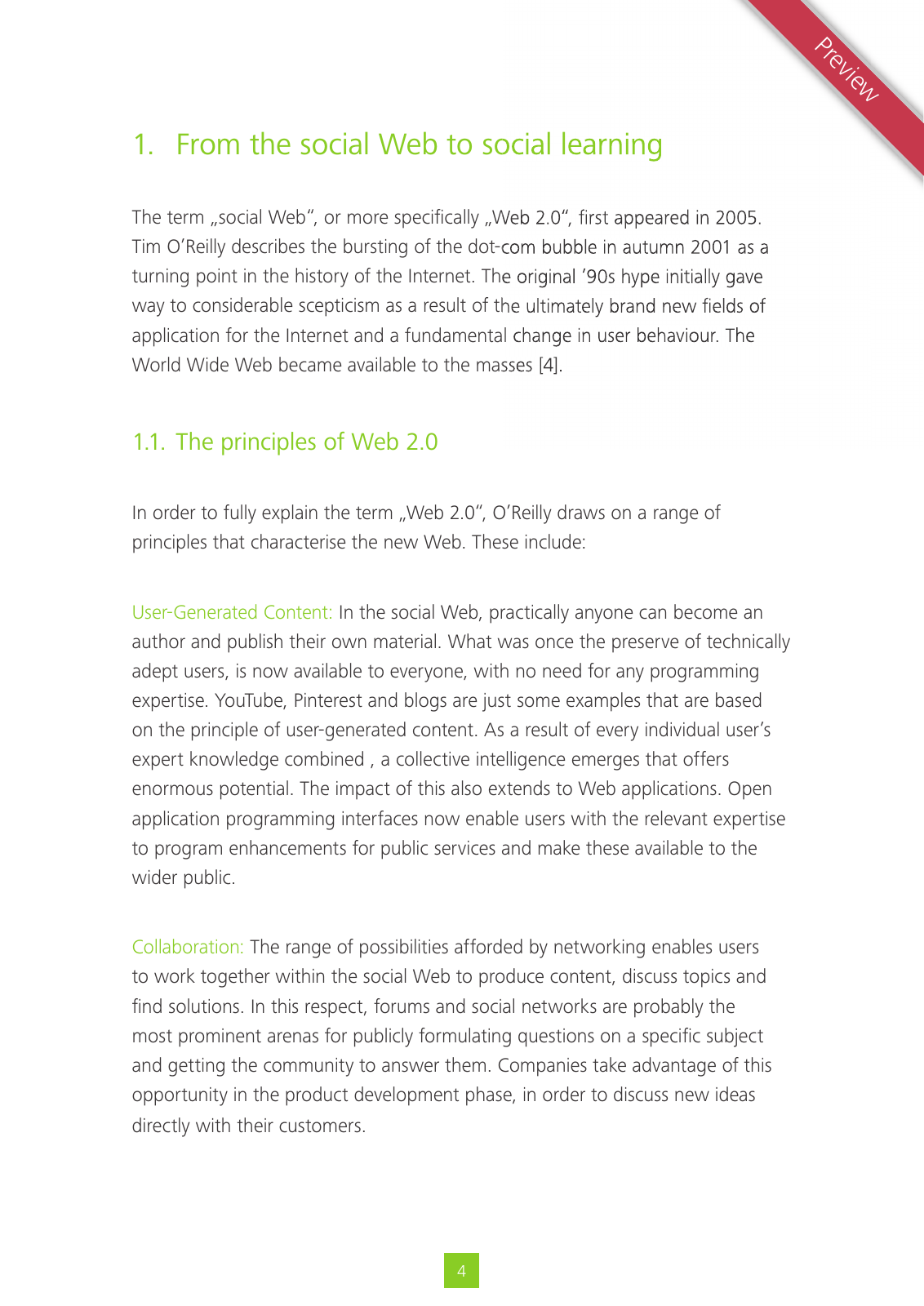Whitepaper Social Learning EN Seite 4
Hinweis: Dies ist eine maschinenlesbare No-Flash Ansicht.Klicken Sie hier um zur Online-Version zu gelangen.
Inhalt
41 1 The principles of Web 2 0 In order to fully explain the term Web 2 0 O Reilly draws on a range of principles that characterise the new Web These include User Generated Content In the social Web practically anyone can become an author and publish their own material What was once the preserve of technically adept users is now available to everyone with no need for any programming expertise YouTube Pinterest and blogs are just some examples that are based on the principle of user generated content As a result of every individual user s expert knowledge combined a collective intelligence emerges that offers enormous potential The impact of this also extends to Web applications Open application programming interfaces now enable users with the relevant expertise to program enhancements for public services and make these available to the wider public Collaboration The range of possibilities afforded by networking enables users to work together within the social Web to produce content discuss topics and fi nd solutions In this respect forums and social networks are probably the most prominent arenas for publicly formulating questions on a specifi c subject and getting the community to answer them Companies take advantage of this opportunity in the product development phase in order to discuss new ideas directly with their customers 1 From the social Web to social learning The term social Web or more specifi cally Web 2 0 fi rst appeared in 2005 Tim O Reilly describes the bursting of the dot com bubble in autumn 2001 as a turning point in the history of the Internet The original 90s hype initially gave way to considerable scepticism as a result of the ultimately brand new fi elds of application for the Internet and a fundamental change in user behaviour The World Wide Web became available to the masses 4 Preview
